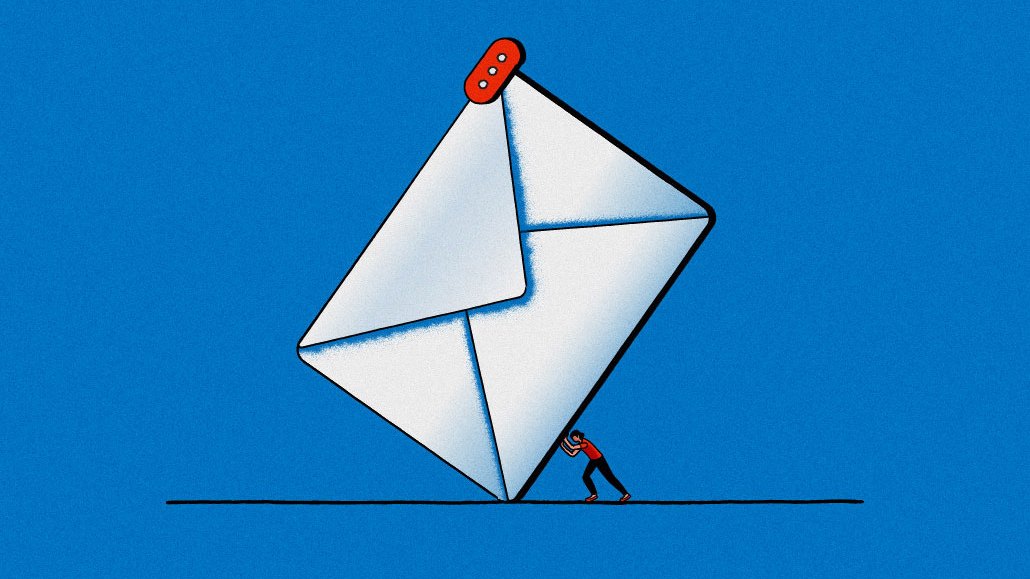Save 50% on a 3-month Digiday+ membership. Ends Dec 5.

As a Digiday+ member, you were able to access this article early through the Digiday+ Story Preview email. See other exclusives or manage your account.This article was provided as an exclusive preview for Digiday+ members, who were able to access it early. Check out the other features included with Digiday+ to help you stay ahead
Concerned over Substack’s ideological messaging, some creators are leaving — or considering leaving — the platform in 2025.
One of those creators is sportswriter Joe Posnanski, who published his final Substack post on March 3. Although Posnanski was successful on Substack, achieving a following of over 47,000 on the platform, he said that his decision to leave was motivated by a desire to distance himself from the platform’s growing association with politically extreme voices, whether on the right or the left.
“When you search my stories online, you see Substack above my name,” Posnanski said. “Whenever something would blow up a little bit with Substack, I was somehow connected to that, and I didn’t like that at all.”
Rival newsletter service Beehiiv claims almost 3,000 creators have jumped ship from Substack to its platform in the past year. Such assertions can appear a bit like marking their own homework, of course. But Beehiiv co-founder and CEO Tyler Denk claims that this is the number of individual publishers who have self-reported that they had migrated from Substack during onboarding.
The rate of writers moving over from Substack has continued to accelerate in 2025, with nearly 1,000 creators moving from Substack to Beehiiv between January and March of this year, Denk asserted. In total, Denk said that nearly 5,000 writers have moved from Substack to Beehiiv since Beehiiv launched in October 2021.
Naturally, 5,000 writers is a drop in the ocean for Substack’s 63,000-strong base of newsletter creators, but it represents a growing tide of writers who are leaving or considering leaving the platform for greener (and less politically fraught) pastures.
The writers who left Substack in early 2025 represent a second wave after an initial burst of creators left the platform in January 2024 following the publication of an open letter decrying the presence of “Nazis” on Substack. In addition to white supremacist political commentator Richard Spencer, the open letter cited neo-Nazi Patrick Casey as another example of a politically extreme voice with a significant following on the platform. Writers such as Posnanski are part of a second exodus from Substack sparked by growing concerns over political extremism in the United States following Donald Trump’s presidential inauguration in January.
Writers who still maintain a presence on Substack, such as Jeannine Ouellette and Dave Karpf, told Digiday that they were closely monitoring the situation and were considering leaving Substack for other platforms if they felt the company continued elevating far-right voices.
“Substack leadership has correctly read the tea leaves that there is an expectation right now of deference to the administration, and is refashioning that deference as somehow being in favor of free speech,” Karpf said, referring to statements by Substack leaders such as former Substack vp of communications Lulu Cheng Meservey, who publicly declared in 2022 that former Twitter employees concerned over the platform’s decrease in content moderation would not be a good fit at Substack.
Substack is a privately held company, counting among its owners founders Chris Best, Hamish McKenzie and Jairaj Sethi, as well as venture capital funds such as Andreessen Horowitz and Y Combinator. The company has not disclosed the specific ownership stakes of individual investors.
“They [Substack management] have read that that is the mood of tech and media elites, and they are signaling that they are on board — and what Substack writers are responding to is that signaling from Substack,” Karpf said.
Not all Substack creators are equally concerned over the presence of politically extreme voices on the platform. On March 30, for example, writer Tom Cox, whose newsletter has over 38,000 followers, posted on Substack to say that he had not experienced a rise in extremism in his circle on the platform.
“No doubt there are some dangerous and evil people on this site — just as there are on all parts of the internet, including Bluesky — but what I see mostly are kind, thoughtful individuals who love reading,” Cox wrote.
Substack is aware of creators’ growing concerns. The platform supports community moderation practices that give publishers control over their communities, and has policies intended to protect against extreme statements such as incitements to violence, according to a company spokesperson. But the platform declines to subjectively censor writers outside of those policies. The spokesperson also flagged that Substack had removed five publications for violating those rules in January 2024. The spokesperson declined to put forward a Substack executive for interview on this topic.
Substack competitors such as Beehiiv have taken advantage of creators’ concerns by highlighting to potential users that they are services or software, rather than social platforms in their own right. As Substack evolves from a newsletter company into a full-service social platform, creators believe the company has a growing responsibility to moderate its content, and Beehiiv’s approach is intended to sidestep this potential challenge.
“If you have a social network of far-left people, which is typically Bluesky, or far-right, which is maybe Twitter or maybe Substack Notes or whatever, because it is a social network, there are a lot more interactions with other people using the platform,” Denk said. “We fundamentally are more of a Shopify approach, where we are tools and infrastructure for our users. You could sign up five minutes after the most left-wing or right-wing person, and their experience and content has no interactivity with you on the platform.”
More in Media

Ad Tech Briefing: The Programmatic Governance Council is a bid to reset power dynamics
As tensions over TID and GPID peak, Tech Lab is convening a council to hash out commercial ground rules.

Newsweek is building an AI Mode-like experience to customize homepages for readers
Newsweek is building an AI homepage modeled after Google’s AI Mode to increase engagement and offset declining search referrals.

How AI’s hit to publisher traffic is quietly rewiring media M&A
Publishers’ AI-driven traffic declines are cooling M&A, stalling deals and lowering valuations. Some analysts are optimistic about 2026.








